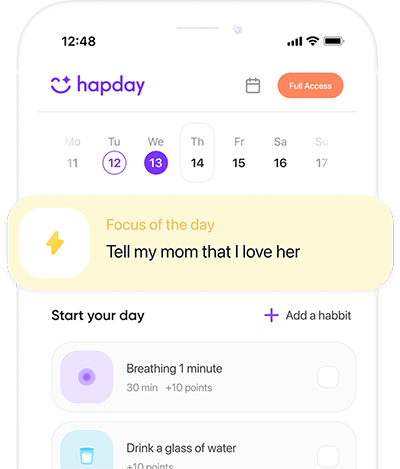Procrastination is a familiar foe for everyone, whether you’re a student, a seasoned professional, or managing a household. The art of delaying tasks until the eleventh hour often breeds stress, anxiety, and diminished productivity. But, as mindfulness continues to gain traction in wellness circles, more and more people are discovering its potent abilities to conquer procrastination. Through a series of mindful techniques, you can shift your focus and ground yourself in the present moment, effectively boosting productivity. Let’s explore these strategies together.
Table of Contents
- What Drives Procrastination?
- Why Mindfulness Matters
- Mindfulness Techniques for Overcoming Procrastination
- Mindfulness and Productivity: A Harmonious Duo
- Supplementing Mindfulness with Other Strategies
- The Path Forward with Mindfulness and Procrastination
What Drives Procrastination?
Before tackling procrastination head-on, it’s crucial to understand its roots. The Journal of Behavioral Decision Making highlights that procrastination isn’t just about poor time management; it’s deeply intertwined with emotional regulation. Often spurred by fears of failure, anxiety, or sheer boredom, procrastination is more about navigating emotions than merely clock-watching.
Peeking into the Brain
Delving into neuroscience unveils why procrastination happens. Our prefrontal cortex, the decision-making hub, is in a constant battle with the limbic system, the brain’s pleasure seeker. When the limbic system wins, procrastination thrives. However, practices like mindfulness can fortify the prefrontal cortex, promoting thoughtful decision-making over impulsive avoidance, as found in McCown and Johnson’s publication on Procrastination and Task Avoidance.
Why Mindfulness Matters
Mindfulness, the practice of being acutely present without judgment, allows us to observe our thoughts and emotions more clearly. By heightening awareness, mindfulness helps identify procrastination triggers and manage them whenever they arise.
The Benefits of Mindfulness in Battling Procrastination
- Heightened Focus and Concentration: Research in the Journal of Cognitive Enhancement shows that routine mindfulness practice significantly sharpens attention and task performance.
- Emotional Balance: Mindfulness cultivates a calm, non-reactive state, reducing the grip of negative emotions like fear or anxiety that fuel procrastination.
- Reduced Stress: By promoting relaxation, mindfulness eases the stress that frequently drives us to delay.
- Increased Self-Compassion: Embracing self-compassion through mindfulness diminishes the guilt and self-criticism that accompany procrastination.
Mindfulness Techniques for Overcoming Procrastination
1. Mindful Breathing
Mindful breathing, a straightforward yet powerful practice, anchors you in the present. By focusing on the rhythm of your breath, you naturally calm the mind and alleviate stress.
How to Practice:
- Sit comfortably, close your eyes, and inhale deeply through your nose, expanding your abdomen.
- Exhale slowly through your mouth, concentrating on the breath’s sensations.
- Let go of wandering thoughts and refocus on your breathing.
- Start with five minutes daily, gradually extending the time.
2. Body Scan Meditation
Body scan meditation heightens awareness of bodily sensations, keeping you in the now and away from procrastination-triggering thoughts.
How to Practice:
- Lie comfortably with closed eyes.
- Focus on your feet, noting any sensations, then gradually shift attention upward through your body.
- Whenever your mind strays, gently redirect focus back to your body.
- Practice for 10-15 minutes daily.
3. Mindful Journaling
Engage in mindful journaling to unravel the emotions and thoughts linked to procrastination, gaining insight into recurring patterns and habits.
How to Practice:
- Dedicate 10 minutes of daily journaling.
- Write freely about your feelings without judgment or critique.
- Reflect on what might be causing procrastination, exploring how it impacts you emotionally.
- Use this exercise to set daily goals and intentions.
4. Single-Tasking
In a world that glorifies multitasking, mindfulness champions single-tasking—dedicating focus solely to one activity at a time to enhance productivity.
How to Practice:
- Select a task and set a timer for 25 minutes (reminiscent of the Pomodoro Technique).
- Work solely on this task within the set time.
- Take short breaks after each session and repeat.
- This routine promotes mindfulness, focus, and efficiency.
5. Acceptance and Commitment
Acceptance and Commitment Therapy (ACT), a mindful approach, urges acceptance of thoughts and feelings without battling them, all while pursuing value-aligned actions.
How to Practice:
- Determine your core values and what truly matters to you.
- Acknowledge any arising thoughts or emotions, accepting them impartially.
- Commit to value-congruent actions despite challenges.
Mindfulness and Productivity: A Harmonious Duo
Regular mindfulness practice not only tackles procrastination but also elevates productivity. A study in the Journal of Management found that mindful employees reported better job performance and tapped into their creative potential more often.
Cultivating a Mindful Work Environment
Many organizations, including giants like Google and Intel, are integrating mindfulness into their culture. Such initiatives have been linked to increased employee satisfaction and lower stress levels.
Tailoring Your Mindfulness Practice
Your mindfulness routine should complement your lifestyle. Here are some tips:
- Explore Various Techniques: Experiment until you find what works for you.
- Practice Consistently: Make mindfulness a daily habit by dedicating specific times to your practice.
- Set Achievable Goals: Begin small and slowly expand your sessions’ duration and frequency.
- Be Patient: Progress may take time; embrace it with compassion and self-kindness.
Supplementing Mindfulness with Other Strategies
Though mindfulness is a terrifically effective tool, pairing it with other strategies further supports your journey to beat procrastination.
1. Time Management Techniques
Mindfulness pairs well with robust time management methods like the Eisenhower Box, which prioritizes tasks by urgency and importance.
2. Creating an Optimal Environment
Design a workspace that enhances focus by decluttering, minimizing distractions, and ensuring adequate lighting.
3. Break Down Tasks
Undoubtedly, large projects can intimidate, often leading to procrastination. Splitting them into bite-sized tasks makes them achievable and less daunting.
4. Establish Clear Deadlines
Having specific deadlines can instill a productive sense of urgency. However, be realistic to avoid unnecessary pressure.
5. Seek Supportive Connections
At times, friends, family, or colleagues can offer the encouragement needed to overcome procrastination. Sharing progress enhances accountability, too.
The Path Forward with Mindfulness and Procrastination
As our understanding of procrastination evolves, mindfulness remains a pivotal strategy in its mitigation. Tech advancements offer both distractions and tools, like mindfulness apps and online courses, that bolster your practice.
Embrace Mindfulness as a Lifestyle
Becoming mindful isn’t just about overcoming procrastination. It’s about choosing to live with presence, intention, and compassion. By cultivating mindfulness, you’re not only tackling procrastination but also enriching your life with purpose and productivity.


The idea of creating an optimal workspace resonated with me – clutter drives me crazy and definitely affects my productivity!
Same here! A clean workspace clears my mind too; it’s like magic!
‘Acceptance and Commitment Therapy (ACT)’ sounds promising as it encourages acceptance rather than avoidance of negative feelings related to procrastination. Understanding that it’s okay to feel anxious or bored can be liberating. This insight can lead many people toward making more constructive choices regarding their tasks.
I’m skeptical about all this mindfulness hype. Sure, it sounds nice in theory, but can we really tackle procrastination with just breathing exercises? I need something more tangible!
@ChillDude_23 Exactly! While mindfulness sounds great, I’d rather have an action plan with deadlines instead of just breathing!
@ChillDude_23, I get your skepticism, but honestly, it’s worth giving it a shot. You might be surprised by the results!
The relationship between procrastination and emotional regulation is well-supported by research, which adds depth to this discussion. Mindfulness techniques like body scan meditation indeed have scientific backing in enhancing focus and emotional balance. This article provides a solid foundation for anyone interested in delving deeper into their habits.
Love the emphasis on emotional balance here! It makes so much sense that managing emotions can help reduce procrastination stress.
Absolutely! When I’m calm and collected, I’m way more productive than when I’m anxious.
This article on procrastination and mindfulness has truly inspired me! The techniques outlined, especially mindful breathing and journaling, are practical and easy to implement. I’ve struggled with procrastination for years, and I can already see how these strategies could help me stay focused. Mindfulness isn’t just a trend; it’s a game-changer!
While the article presents some interesting points, I find it hard to believe that mindfulness alone can combat procrastination. It seems overly simplistic to think that just sitting quietly will fix deeper psychological issues. Procrastination is often rooted in fear and anxiety, which need more than mindfulness to address effectively.
I really appreciate how this article highlights the emotional roots of procrastination. It’s so easy to just blame time management when there’s often so much more going on beneath the surface! Mindfulness seems like a powerful tool to not only improve focus but also to understand and manage our emotions better. Can’t wait to try these techniques!
Interesting take! Do you think mindfulness alone is enough? Sometimes I feel like I need a mix of strategies to really kick procrastination’s butt.
Totally agree! I used to think it was just laziness, but now I see it’s deeper than that. Mindfulness has really helped me tackle my procrastination head-on.
I appreciate the effort put into this article, but let’s be real—mindfulness sounds great in theory but doesn’t always translate into practice. Telling someone struggling with procrastination to ‘just breathe’ feels a bit dismissive of their actual struggles. What about actionable steps outside of meditation? There needs to be more depth.
“Single-tasking” is such an interesting concept! In today’s world where multitasking is glorified, focusing on one thing at a time feels revolutionary yet scary! Can anyone share their experiences with single-tasking?
This post is such a gem! I’ve started practicing mindful breathing and it’s been a game-changer for my focus. It’s amazing how just a few minutes of deep breathing can clear your mind and get you back on track.
I found the section on Acceptance and Commitment Therapy particularly enlightening! It’s refreshing to hear that we should accept our feelings rather than fight them – that’s something I’ve struggled with.
I’ve tried mindful journaling before and found it quite helpful for gaining clarity on my feelings about tasks I avoid. This article has inspired me to make it part of my daily routine again!
Journaling can be therapeutic for sure; however, sometimes writing down what we feel can also lead us deeper into our own rabbit holes.
That’s awesome! Journaling has always helped me process my thoughts; it’s like talking to yourself in written form!
‘Mindful Journaling’ sounds like the perfect excuse for my friends who write ‘To-Do’ lists while scrolling social media! Maybe I should start calling my procrastination ‘Mindful Delay’. But on a serious note, these techniques may help some folks; at least they provide a fresh perspective on our common struggle with procrastination.
‘Mindful Delay’ is just another fancy term for putting things off until the last minute! Let’s not kid ourselves—if you’re delaying tasks because you’re bored or anxious, it might need more than mindfulness; perhaps some good old-fashioned accountability would help!
‘Mindful Delay’—I love that term! It’s almost like we’re giving ourselves permission to take our time while pretending we’re being productive! Seriously though, it’s interesting how people can spin things differently depending on their mindset.